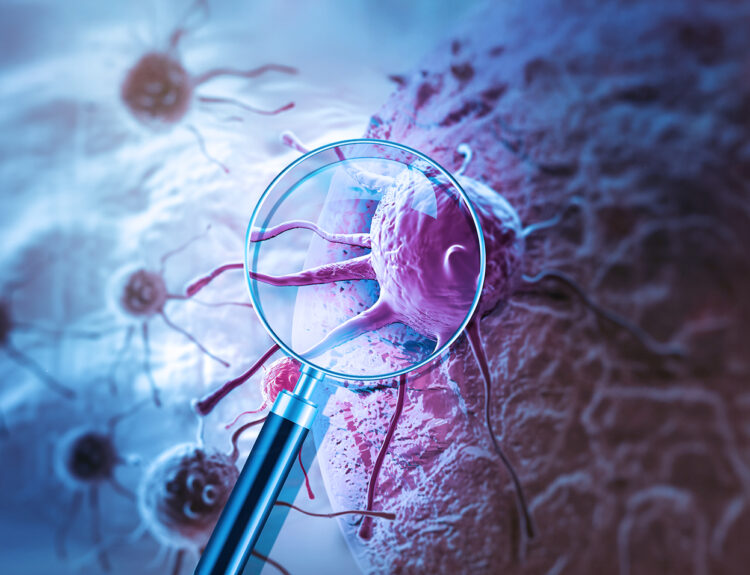Successful cancer treatment relies heavily on timely and accurate diagnosis and continued response assessment. The quality of the information provided by imaging specialists and pathologists at diagnosis and beyond informs ongoing choices, and ultimately the success or failure of treatment regimens. Traditional techniques for tracking tumors, however, have been unable to keep pace with the ever-growing number of increasingly sophisticated targeted agents and immunotherapies. The recent explosion in novel cancer imaging techniques should, therefore, provide much-needed support for oncologic care management. However, a recent workshop hosted by the US National Cancer Policy Forum has called into question whether these advancements are being optimally translated into the clinic.
The importance of accurate imaging is highlighted by higher mortality rates reported at community hospitals compared to specialist cancer centers in the US. This is posited to be due, in part, to the availability of subspecialty radiologists in the latter, who have access to the insight of multidisciplinary cancer care teams. Engagement of tumor boards to help integrate specialties, and incentive schemes to encourage interdisciplinary collaboration have been suggested by the aforementioned US forum. In the UK, the publication of the Cancer Strategy 2015–2020 report1 outlined the establishment and funding of Cancer Alliances across the country. This strategy promised to bring together multidisciplinary teams across different hospital trusts and, in particular, support the implementation of the new radiotherapy service specification. The Royal College of Radiologists has since welcomed their establishment, whilst highlighting the importance of communication with patients and clinicians to ensure efficient and timely application of their goals. The consensus appears to be that increased interdisciplinary collaboration among specialties in cancer care is critical to improvement in access to the latest imaging technologies and specialists.
Several suggestions to changes in optimal practice models were suggested in the report from the US National Cancer Policy Forum published in The Journal of Clinical Oncology2; namely access to training for radiologists and therefore wider access of oncology subspecialty radiologists to the public. Studies have revealed a considerable rate of disagreement between second-opinion specialized radiologists with initial cancer imaging reports. Even more worryingly, these initial errors in imaging interpretations have resulted in the patient being placed on inappropriate treatment regimes in up to 53.3% of cases2. The report describes an insufficient total supply of such specialists to achieve widespread geographic coverage in the United States and notes that oncologic imaging is not even a formally recognized subspecialty in most countries. Instead, radiology fellowships are usually based around a specific organ or system. The report, therefore, concludes that a concerted effort to improve education and training in oncologic imaging is imperative. In the UK, the Royal College of Radiologists has recommended a co-ordinated international recruitment of radiology consultants in order to meet the ever-increasing demand in scans; a 2017 report cited that 97% of NHS radiology departments failed to meet reporting requirements. As discussed in the April 2019 editorial piece of this journal, the omnipresent threat of Brexit on the NHS workforce threatens to hinder any progress made in the cancer radiology division.
The employment of structured and synoptic reporting, similar to that used in intensive care and surgery, could facilitate a reduction in diagnostic errors and unjustifiable geographic variations in cancer care. In the UK, the Royal College of Radiologists has defined a comprehensive framework for the use of machine learning and artificial intelligence (AI) within the NHS. It highlights that the development of AI must be carried out at a rate and scale appropriate to meet both the current workforce and patient demands. In the US, software programs that automate measurements of tumor volume and segmentation to facilitate consistency in long term patient assessments are available, but not yet broadly implemented in the clinic.
The role of high-quality imaging in cancer care is continually growing with the emergence of novel treatment strategies. The potential harm to patients caused by lack of access to the latest cancer imaging techniques must be recognized and acted on. In order to improve this gap in cancer care, efforts should be focused on three main areas; development of multidisciplinary care teams that encourage collaboration between oncology specialties, increased access to specialist radiologists via concerted recruitment efforts and promotion of cancer imaging training programs, and the continued incorporation of innovative machine learning and AI processes to streamline analysis and reporting of imaging data.

References
1. URL: https://www.england.nhs.uk/wp-content/uploads/2016/05/cancer-strategy.pdf
2. Nass et al. Journal of Clinical Oncology. 2019 May.
3. URL: https://www.rcr.ac.uk/press-and-policy/artificial-intelligence/ai-our-framework







6 Comments
Adjuvant therapy with Sutent® extends disease-free survival in high risk renal cell carcinoma patients - MDforLives
5 years ago[…] cell carcinoma (RCC) is one of the most common types of kidney cancer. It is diagnosed annually in approximately 3,00,000 people worldwide and results in approximately […]
Aspirin Benefits: Uses, health benefits & risks of Aspirin | MDforLives Blog
5 years ago[…] aspirin can reduce overall cancer risk including colorectal cancer, prostate cancer, breast cancer, hepatocellular carcinoma, ovarian […]
Benefits of Low-Dose Aspirin - MDforLives
5 years ago[…] the way for new applications of aspirin for various conditions including cardiovascular disease, cancer prevention, preeclampsia, and much more. In this blog post, let us understand the benefits of low […]
The Human Microbiome and the cancer | MDforLives Blog
5 years ago[…] tumor-associated microbes, an area of research that could potentially lead to improvements in cancer diagnosis.1 The second, published by D. Davar and colleagues in Science on February 5, 2021, reports […]
The Human Microbiome and the cancer - MDForLives
4 years ago[…] tumor-associated microbes, an area of research that could potentially lead to improvements in cancer diagnosis.1 The second, published by D. Davar and colleagues in Science on February 5, 2021, reports […]
Aspirin Benefits: Uses, health benefits & risks of Aspirin - MDForLives
4 years ago[…] aspirin can reduce overall cancer risk including colorectal cancer, prostate cancer, breast cancer, hepatocellular carcinoma, ovarian […]